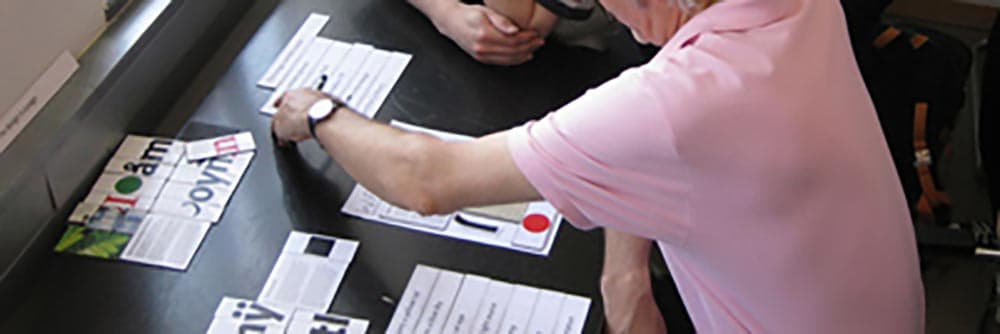
Workshop:
The Design Game
Who: Petr van Blokland
When:
Sunday, June 19,
10:00am–2:30pm
Where: TypeLab
This event is for designers of all experience levels, students, educators and professionals welcome. It’s an intensive 4 hour event; come on time and plan to stay. If you find you can’t make it please cancel to make space for someone else.
36 designers, 9 studios, 3 customers, 13 tables, 42 chairs, 26 designs, 4 rounds and your drawing tools.
Did you ever want to know what clients try to talk about? And why designers always run out of time? Why design processes are not linear and thinking always is? And how to do that as a team? Would you know how it is to balance on the wrong foot? Or why you never should participate in pitches? Then the Design Game still may not give you any answers. But you’ll get a hell of experience, never to forget.
About Petr van Blokland
Born in Gouda, The Netherlands, in 1956, Petr van Blokland graduated Cum Laude from the graphic arts program at the Royal Academy of Fine Arts in the Hague. He has been a freelance designer since 1980. He specializes in systematic design – typically building directories, forms systems, corporate identity programs, etc. He has taught graphic design, typography, and type design for many years at the Royal Academy of Fine Arts in The Hague and at the Academy of Fine Arts, Arnhem. His first typeface is Proforma, a large series commissioned by Purup, Danish manufacturer of forms preparation systems, now released for general use by Font Bureau. His work brought him ATypI’s coveted Charles Peignot Prize in 1988. His statements on typeface design are well-known: On Quality “The same bottomline that applies to typography also applies to typefaces: when no one notices, the aim has been accomplished.” On Experience “To be accomplished in all aspects of the design process is the fundamental demand on the designer. Experience and talent counts, not the availability of equipment.” On Digitization “By carrying out the digitization as an integral part of the design process, maximum control is exercised over the eventual reproducing of the typeface, thereby avoiding any errors of interpretation.” On New Typefaces “Why design a new typeface? After all, there are so many. There is a misconception that typefaces are not designed. They are simply here. Yet new typefaces are designed and this need is increasingly present in view of the current technological advances.”